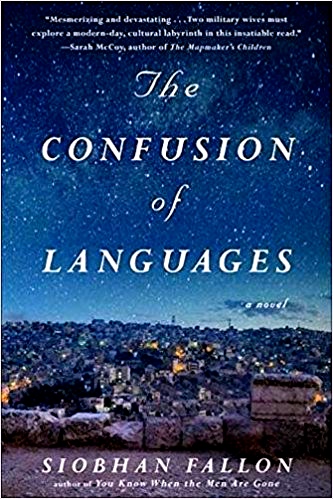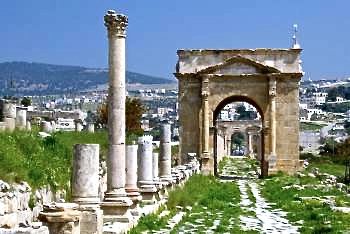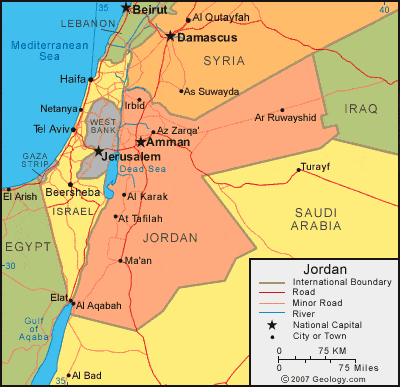“It’s never enough. Adam and Eve. So desperate to know what only God knows. Reaching. The writers of Genesis had us pegged more than two thousand years ago, realized exactly what a human being boiled down to, even on her tippy-toes grabbing at that apple, forcing the fruit on Adam. We’re never happy with what we have even if it’s paradise; there’s always something else.” – Margaret Brickshaw
 Setting her novel in Jordan, author Siobhan Fallon focuses on Americans who serve abroad in the military, protecting U. S. Embassies, and how cultural differences with their host countries affect their lives. These are subjects that the author knows well, since she and her husband, who is still on active duty with the U. S. Army, have recently moved with their family from Jordan to Abu Dhabi for their current tour of duty. Drawing on her own life in Jordan and her observations and insights about how Americans behave, she creates two protagonists who act and feel real. Cassie Hugo, who has been in Jordan for two years, and Margaret Brickshaw, who is a new arrival, live near each other, each dealing with her own personal problems unrelated to the setting, but each also hoping that she can find a friend in the other. Cassie is desperate to have a baby but is still childless after nine years, and she is beginning to wonder whether her marriage will survive. Margaret, a naïve young woman with a new baby, has grown up in a home in which her father disappeared and her mother, with a serious, eventually fatal, illness, depended on Margaret for virtually all of life’s necessities from household chores to companionship. Margaret’s unplanned pregnancy and quick, subsequent marriage to Crick Brickshaw, brought her out of the country to Jordan almost simultaneously with her mother’s death, and even now she is not sure how much of her marriage was for love and how much was from necessity.
Setting her novel in Jordan, author Siobhan Fallon focuses on Americans who serve abroad in the military, protecting U. S. Embassies, and how cultural differences with their host countries affect their lives. These are subjects that the author knows well, since she and her husband, who is still on active duty with the U. S. Army, have recently moved with their family from Jordan to Abu Dhabi for their current tour of duty. Drawing on her own life in Jordan and her observations and insights about how Americans behave, she creates two protagonists who act and feel real. Cassie Hugo, who has been in Jordan for two years, and Margaret Brickshaw, who is a new arrival, live near each other, each dealing with her own personal problems unrelated to the setting, but each also hoping that she can find a friend in the other. Cassie is desperate to have a baby but is still childless after nine years, and she is beginning to wonder whether her marriage will survive. Margaret, a naïve young woman with a new baby, has grown up in a home in which her father disappeared and her mother, with a serious, eventually fatal, illness, depended on Margaret for virtually all of life’s necessities from household chores to companionship. Margaret’s unplanned pregnancy and quick, subsequent marriage to Crick Brickshaw, brought her out of the country to Jordan almost simultaneously with her mother’s death, and even now she is not sure how much of her marriage was for love and how much was from necessity.
 The personal trials and traumas, both real and imagined, which the two women experience, and the absence of their husbands sometimes for weeks, on trips to the embassies in other countries, leave the women on their own in a foreign culture. To bring the issues of these women to life, author Fallon has devised an intriguing structure for the novel, one which creates tension and a sense of mystery and foreboding, while also managing the stories of these two women without having the reader become frustrated by their several emotional issues. For the first fifty pages, the point of view is that of Cassie, who on May 13, 2011, at 3:00 p.m., is a passenger in a car driven by Margaret when it gets hit from behind at a traffic light in Amman. A representative of the embassy comes to the scene to translate and to explain to Margaret that she will need to pay a fifteen dollar “guilt fee” by going to the police station and filling out some papers. Margaret, insistent that she is not guilty, persuades Cassie to take Margaret’s young baby back to their apartment, where he will be more comfortable and indicates that she will go to the police station on her own. She does not return, nor does she call Cassie to indicate when she will be back. She disappears.
The personal trials and traumas, both real and imagined, which the two women experience, and the absence of their husbands sometimes for weeks, on trips to the embassies in other countries, leave the women on their own in a foreign culture. To bring the issues of these women to life, author Fallon has devised an intriguing structure for the novel, one which creates tension and a sense of mystery and foreboding, while also managing the stories of these two women without having the reader become frustrated by their several emotional issues. For the first fifty pages, the point of view is that of Cassie, who on May 13, 2011, at 3:00 p.m., is a passenger in a car driven by Margaret when it gets hit from behind at a traffic light in Amman. A representative of the embassy comes to the scene to translate and to explain to Margaret that she will need to pay a fifteen dollar “guilt fee” by going to the police station and filling out some papers. Margaret, insistent that she is not guilty, persuades Cassie to take Margaret’s young baby back to their apartment, where he will be more comfortable and indicates that she will go to the police station on her own. She does not return, nor does she call Cassie to indicate when she will be back. She disappears.
From here on, the story alternates between two time periods, all clearly labeled as chapter headings. The episodes from May 13, 2011, proceed forward in increments measured in minutes, describing what Cassie is doing from the moment that she first arrives at Margaret’s apartment with Margaret’s baby and slowly begins to realize that Margaret may not be coming back. Alternating with these notes of May 13 are episodes from the point of view of Margaret. These begin on January 15, when Margaret first arrives in Amman to her new home, and introduce the characters with whom Margaret interacts. As the two points of view and the characters’ stories develop, parallel story lines from different time periods evolve, and the reader comes to know the characters’ personalities, along with their past histories. Margaret, a spontaneous person, refuses to live by the “rules” and the cultural etiquette set forth by the embassy – rules prohibiting women from shaking hands and touching Jordanian men, visiting them for any reason in a private home or office, and controlling how much skin a woman may reveal. Conversations and the giving of gifts are to be avoided. Even standing in lines is considered a “democratic” behavior – the idea that all people are equal and will therefore be served in the order in which they reach the front of the line.

The Temple of Hercules in the Roman Citadel in Amman, where Margaret and Cassie take a hike. Click to enlarge.
Gradually, the two time periods grow closer to each other, and the reader sees Cassie, in Margaret’s apartment, becoming frantic at her absence. Eventually, she discovers Margaret’s diary/journal, filled with long descriptions of events and activities in which Margaret has sometimes participated with Cassie. On a trip to the Citadel together, while the men are away in Italy for a few weeks, the women hike to the highest hill in Amman to see the pillars of a Roman temple and come to some realizations on the way back. Discussions of their marriages and whether their husbands are truly “in love” with them alternate with episodes in which the two husbands flirt with other women. Cassie and Margaret do not confront them for fear of what they might discover. Margaret’s journal also reveals other bits of information which makes Cassie fearful of the possible consequences from some of Margaret’s behavior.

Roman ruins in Jerash, which Margaret visits with a Jordanian friend, to Cassie’s horror. Click to enlarge.
Margaret, as the reader – and Cassie – realize through the diary, often continues to behave as if she were in the United States, violating cultural taboos of Jordan, even, at one point, visiting a Jordanian family in the countryside and accepting a gift. A trip to visit the Arch of Hadrian and the Roman ruins in Jerash with a member of this family, which Cassie argued strongly against, eventually leads to the two chronologies coming together in a dramatic conclusion. The reader, aware of the almost constant misunderstandings between Margaret and Cassie, recognizes that each of these women is desperate to find a friend and develop a close relationship, but the reader also realizes that their level of misunderstanding is as dramatic as the “confusion of languages” and cultures which often exists between Americans and those of other cultures. However much an American may misinterpret the visual “signs” and “signals” sent by Jordanians, a similar confusion often exists within everyday life among Americans. Domestic episodes involving love and honor in relationships eventually become broad underlying themes within a multicultural environment, providing much to think about in this well developed and culturally intriguing novel.

King Abdullah and Queen Rania with their four children, Princess Iman, Princess Salma, Crown Prince Hussein, upon his graduation from the Royal Military Academy Sandhurst , Prince Hashem, and Princess Salma. Click to enlarge.
Photos, in order: The author’s photo appears on the book jacket and on https://www.amazon.com
The map of Jordan and its neighbors is from http://geology.com/
The Roman Temple of Hercules in Amman may be found on https://upload.wikimedia.org/
The Roman ruins of Jerash, which Margaret visits with a Jordanian friend are from http://www.goseewrite.com
The picture of King Abdullah and his family is on http://jordanianroyals.tumblr.com/

